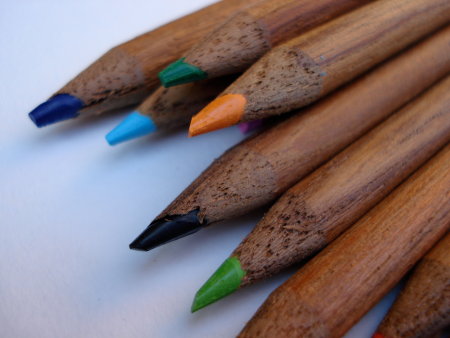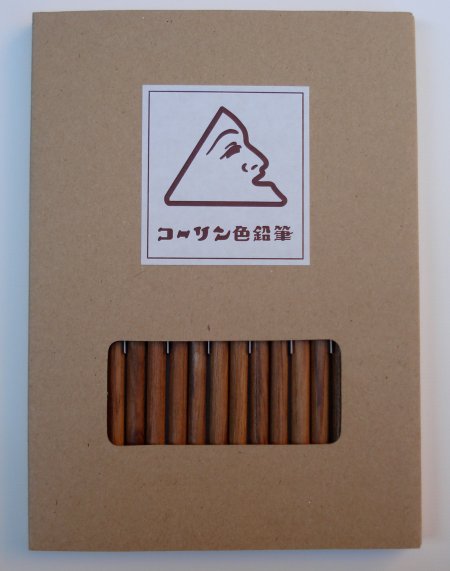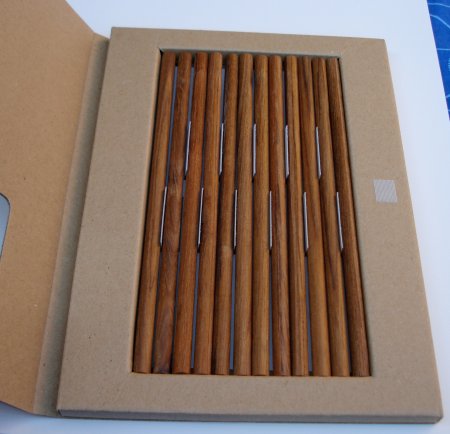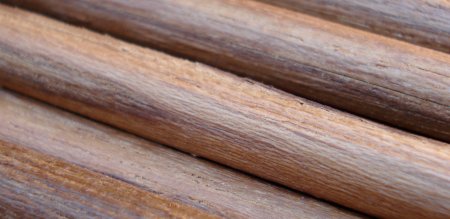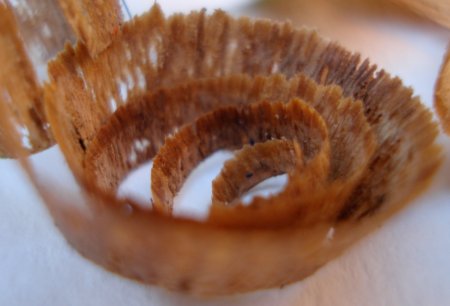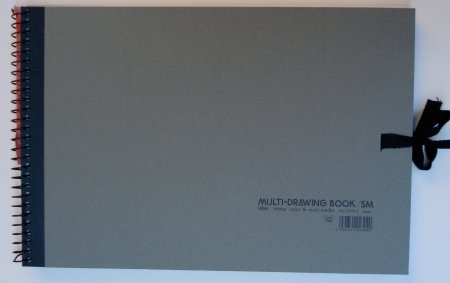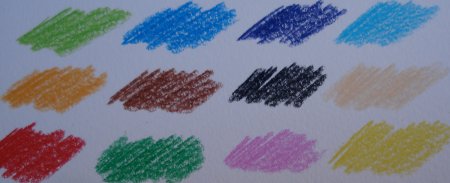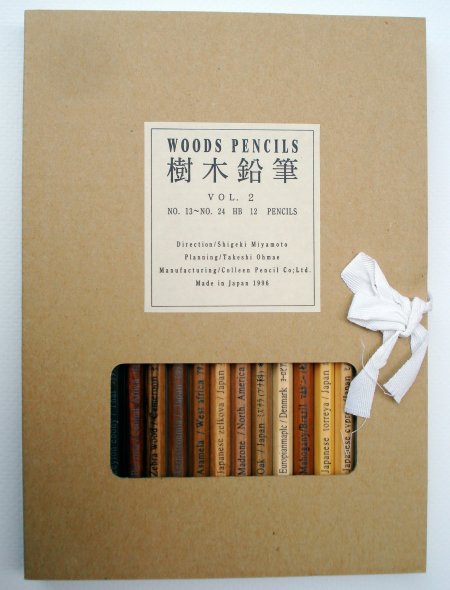
The Colleen Woods series represents an exciting vision of woodcase pencil manufacturing. The series is also a profoundly simple and beautiful pencil set. Pencils have been made from cedar for a century or more, and more recently from jelutong, pulai, and basswood. Pine and fir have also been used.
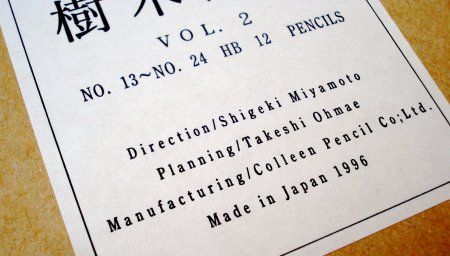
Yet – out of thousands of global tree species and raw materials – why have so few been used?
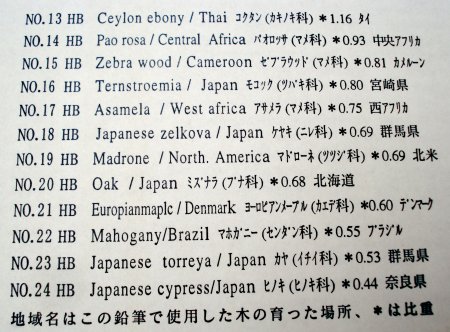
Altering a core aspect of a pencil isn’t done lightly. There have been some experiments with shape, and many with a pencil’s finish. But what about the pencil’s core materials – specifically the type of wood?
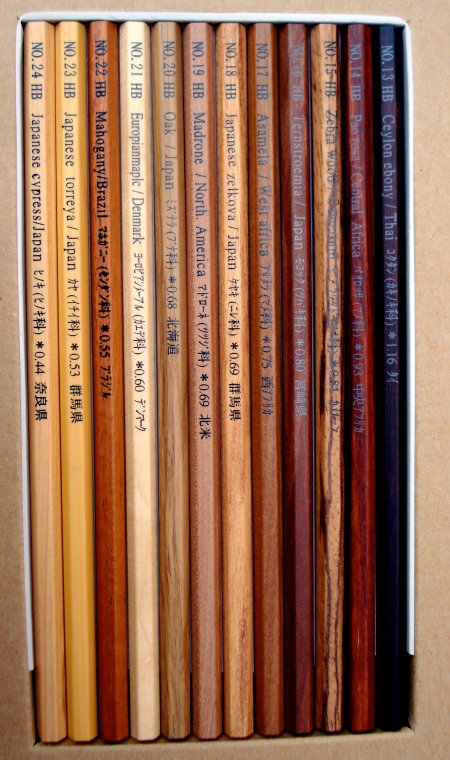
Twelve years ago, Colleen recognized that pencil slats could be made from any wood that the machinery could cut, and created a varied set as an artistic exploration.
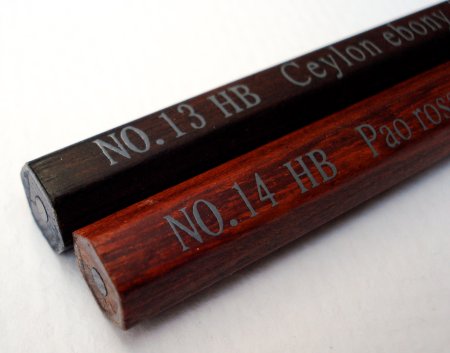
Though others have competently explored the pencil’s potential, Colleen seems to have mined a much deeper vein, changing the pencil’s wood.

The presentation is modest, and probably quite different from how a North American company would present a luxury product – a plain cardboard box.
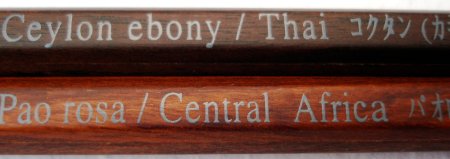
Twelve pencils are presented – each marked with the number in the series, the HB grade, the bilingual (English and Japanese) wood species and country/area of origin, and a most unusual number – the specific gravity of the pencil’s wood. Some species are familiar, and some are more exotic.
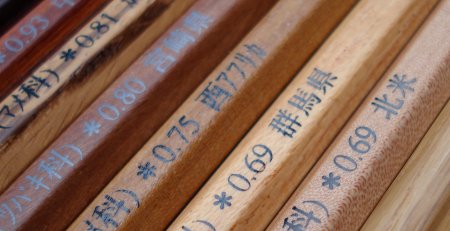
Specific gravity is a measure of density relative to water at 4 degrees C.
Meaning – woods with a specific gravity greater than 1.0 will sink in water! The ebony pencil weighs a remarkable 8.7g – more than double a modern cedar pencil, which typically weighs around 3.8g. It is a memorable experience to hold. In fact each pencil is an amazing delight, and together they form an incredible set.

Here is a chart listing the pencils, place of origin, specific gravity, and links to additional sources of information about the tree species.
| Ceylon ebony | Thailand | 1.16 | Wikipedia – Ebony |
| Pao rosa | Central Africa | 0.93 | cirad.fr – Pao Rosa (PDF) |
| Zebra wood | Cameroon | 0.81 | Wikipedia – Zebrawood |
| Ternstroemia | Japan | 0.80 | NCSU – Ternstroemia |
| Asamela | West Africa | 0.75 | Wood Explorer – Asamela |
| Japanese zelkova | Japan | 0.69 | NCSU – Zelkova |
| Madrone | North America | 0.69 | Wikipedia – Madrone |
| Oak | Japan | 0.68 | Wikipedia – Oak |
| European maple | Denmark | 0.60 | kahrs.com – European Maple |
| Mahogany | Brazil | 0.55 | Wikipedia – Mahogany |
| Japanese torreya | Japan | 0.53 | Wikipedia – Torreya |
| Japanese cypress | Japan | 0.44 | Wikipedia – Cypress |
I’ve not found anyone who has seen the set in person to not be amazed.
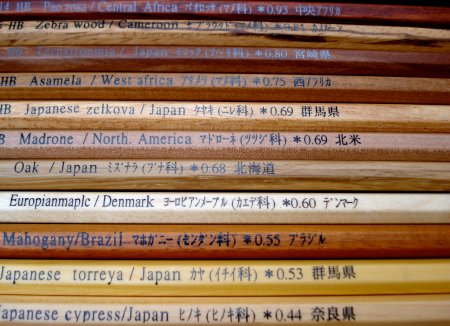
My sincere and deep thanks to Kero556 for this amazing gift.
[UPDATE, June 9, 2009] Thanks to a flattering post at Yellowgoat (thank you!), I rediscovered Kero556’s Flickr photos, including this one, which appears to show the slats used to create these pencils.

